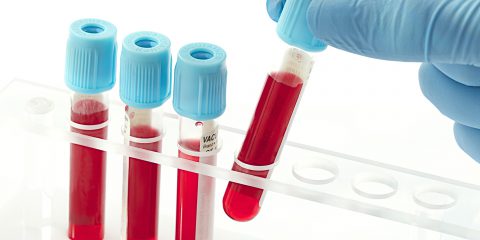29 results

Posted on 18.09.2014
The consumerisation of care: Can medtech compete?
Editors’ Note: This post is part of a series on Consumerisation of Care. Follow the conversation and learn from industry experts using the Twitter hashtag #mtf2014. Digital technologies are changing how companies innovate, interact and do business. Consumer industries such as retail, electronics, and telecommunications already use digital technologies to more closely connect to customers, better […]

Posted on 05.08.2014
The ‘Eye-Phone’ That Helps Prevent Blindness
According to Dr. Patricia Mechael, executive director of the mHealth Alliance, in developing countries the average doctor-to-patient ratio is one doctor to every 250,000 patients. Yet these same countries account for 80% of mobile subscriptions worldwide. It’s no surprise, then, that mobile health technology has substantial potential to improve access to healthcare in the developing world.

Posted on 29.07.2014
Superbugs: “The physician community needs to get its act together”
The WHO has been raising the ‘threat level’ on this issue progressively each year for the last decade, with individual disease reports highlighting the emerging threat of antimicrobial resistance (AMR). This year’s report however highlights this pandemic like never before, demonstrating it’s global nature and its profound impact on health and economics. I’m a cardiologist and the report speaks to me – actually it screams out loud: “We need to get our act together”.

Posted on 24.03.2014
HIV 101: Tuberculosis and HIV, a Killer Combination
Today, March 24, is World TB Day. We’re examining the link between HIV and tuberculosis (TB) infections and how, by fighting these diseases together, we can create a generation free of HIV and TB!

Same-day Testing and Treatment, STAT
Imagine walking for most of the day to get to the health center nearest your community, carrying your young child who is very ill. When you arrive, the doctor takes a sample from your child to perform a diagnostic test. You then learn that it will take a month or more to receive the results, as only a specialised laboratory can perform the necessary test to obtain a diagnosis. This sort of unnecessary delay can be the difference between life and death. It is still, nevertheless, the reality in many countries, especially in limited resource settings where diagnostic testing is centralised, and most patients live far from testing sites.

Posted on 16.10.2013
Always read the small print…on the ENVI proposal for the reprocessing of single-use medical devices
Caveat Emptor, or ‘Buyer Beware’, is a commercial rule favouring the seller, now largely extinct due to modern consumer legislation. But the European Parliament’s ENVI Committee, in its amendment on the reprocessing of single-use medical devices, has unwittingly slipped something similar back in again. Given the complex and highly technical nature of the Medical Devices Directives, I can see where busy MEPs would struggle to understand the details and consequences of this amendment, so I think it is essential that we take a moment to read the fine print.

3-D printing sparks medtech innovation: the new ‘bionic’ ear
From the day I embarked on my journey in the world of medical technology as a Eucomed Communications Intern, I have been impressed by the wide spectrum of technological breakthroughs that surges forward with unprecedented speed. At the same time, I have come to realise that innovation plays a key role in the medtech industry as it helps to improve patients’ lives. And one technology that substantially contributes to driving innovation is three-dimensional printing – also termed ‘additional manufacturing’ – which has already been used for the production of medical devices, bones and, most lately, for a tracheal splint that saved a baby’s life. This printing technique takes on yet another dimension when it comes to producing human tissue and manufacturing human organs. However real this may seem, researchers at Princeton University in New Jersey, the United States, have made the impossible possible. The team has conceived a 3-D ‘bionic’ ear, interwoven with electronics and tissue – and capable of hearing radio frequencies by far surpassing the range of a natural human ear. If only Van Gogh and Beethoven were still alive, one would think.

Medical devices and in vitro diagnostics proposals: Information is Power
World Health Day approaching us on April 7th is meant to raise awareness on the endless host of hurdles that undermines our health and therefore, our quality of life. Public health is about making sure that the external factors that determine our health are governed by policies that have people’s well-being at the very heart of their mandate. EPHA, Europe’s leading NGO advocating for better health, is committed to that very principle.
This year marks EPHA’s 20th anniversary in advocating EU and European policy-makers on public health. Bringing today’s leaders to focus on people’s health is not an easy task. The medical devices and in vitro diagnostics files appropriately represent the juggling effort that advocating for public health usually turns out to be.

Understanding in Vitro Diagnostics & Why They Need a Separate Regulatory Framework
Many times I’ve found myself in situations where I had to explain that indeed in vitro diagnostics (IVDs) are to all extent medical devices but that, in practice, the subject we happened to be discussing would not entirely (or at all) be applicable to IVDs.
It was always a case of: “…yes, yes.. BUT”…
If there is one message you take away from this post, let it be… IVDs have very different risk sets associated to them: no direct contact with patient, value of the medical data they deliver and that they provide no treatment.












